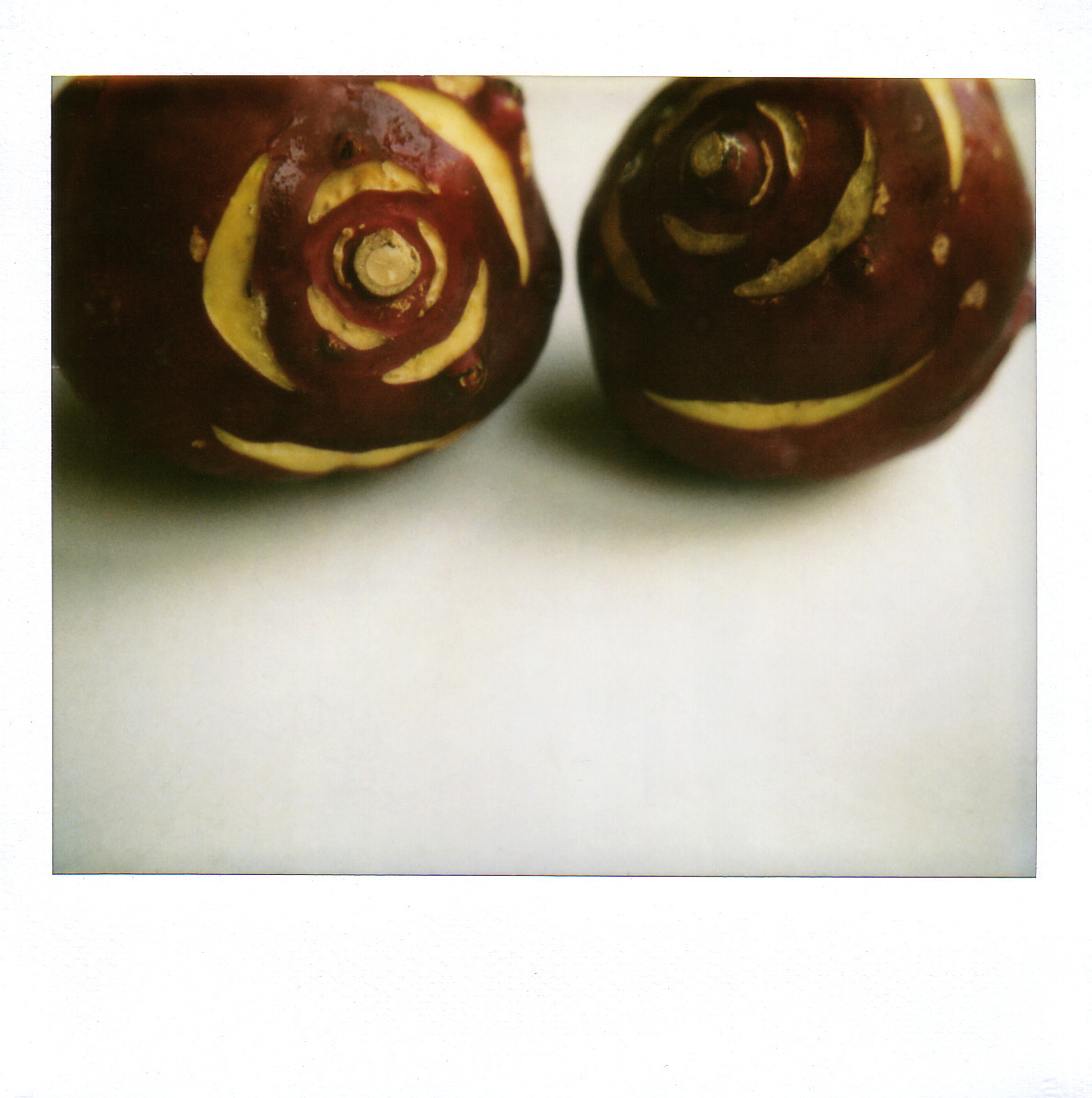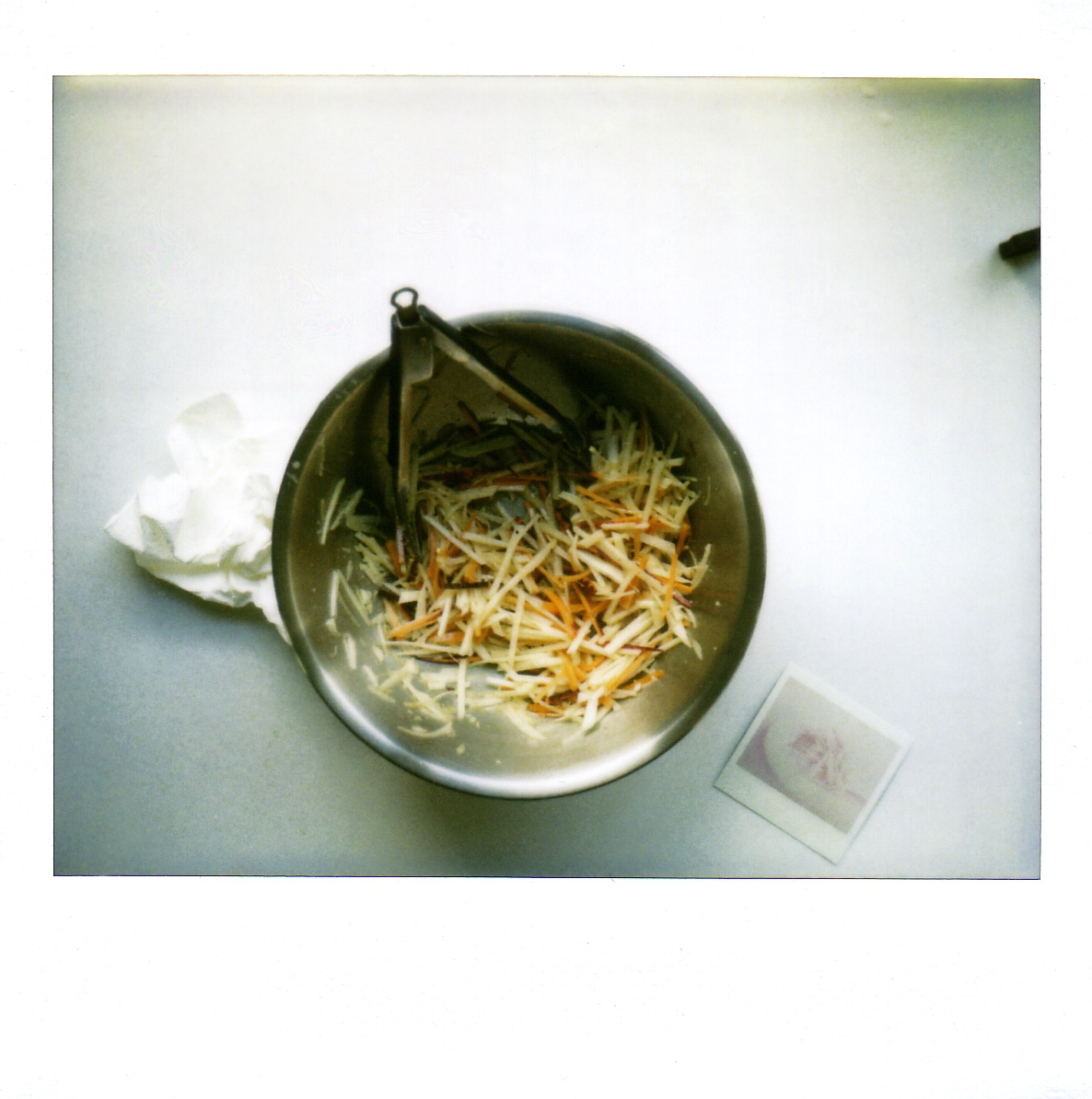A whole bowlful
I had intended to talk about dessert today. You’ve been extremely kind about the recent vegetable recipe bonanza around here, and to thank you, I wanted to bake you something especially nice. You deserve it. So I made a pan of gingerbread. The recipe was new to me, but it looked delicious: good and spicy, with rum-soaked raisins and crystallized ginger and orange zest and a pretty glaze. I just knew you would love it. I was very excited. To make sure it was worthy, I cut a couple of slices to eat after dinner the other night, while we sat on the couch with a DVD of Dog Whisperer, hoping that Cesar Millan might, god willing, help us understand why Jack is so weird sometimes. But unfortunately, it wasn’t very good. I mean, Cesar was fine – calm-assertive, as usual – but the gingerbread was only so-so. It tasted a little too strongly of molasses, and the glaze was too sweet. Actually, I think the first word that came to mind was meh.
I really am sorry. I tried.
But on the upside, the Parade of Underappreciated Vegetables marches on! Or rolls on! Or tumbles on! Or whatever it is that kohlrabi does.

Up until about a week ago, I did not expect to ever say the word kohlrabi on this site. I had eaten it three or four times, usually sliced thinly and dunked in aioli or vinaigrette, and though it was pleasant, I didn’t feel particularly inspired to buy it again. It has a very nice flavor – a cross between a cabbage and a broccoli stem, but milder and sweeter than both – but still, I was unmoved. It seemed unapproachable, difficult somehow. It always caught my eye at the farmers’ market, but more as a sort of vegetal artwork than anything else. To me, it was kind of like Damien Hirst’s dead shark in formaldehyde, the one that’s on display right now at the Met: interesting to look at, even beautiful to some, but at the end of the day, a little too weird. (Is that a bad comparison? Yes?)
But the weekend before last, I went to Wordstock, a literary festival in Portland, and while I was there, I met Ivy Manning, author of The Farm to Table Cookbook. Over the past few months, a couple of you have e-mailed me about her book, telling me how wonderful it is, and I thought she might like to know, so I told her. (Thank you, by the way, for giving me something to say to her; I am sometimes a little shy.) She was warm and funny and down-to-earth, and the two of us got chatting, and somehow we wound up on the subject of kohlrabi. I have no idea how it happened, but it did, and I am now forever indebted to her, because in the course of that conversation, she told me about a recipe in her book, a recipe for a kohlrabi salad that, as of lunchtime today, officially changed everything.

In fact, between Brandon and I, we ate almost a whole bowlful – normal yield: 6 servings – in a single sitting. I don’t know why it took me so long to warm to kohlrabi, but I think I made up for it today. Ivy’s recipe, which comes from Chef Fearn Smith of The Farm Café in Portland, makes a bright, refreshing salad that could win over any skeptic, myself included. Actually, when Ivy was describing it to me, she referred to it as “The Y Chromosome Salad,” because it has conquered, in particular, so many doubting men. You just peel and julienne a carrot and two kohlrabi – a slightly tricky venture, admittedly, since kohlrabi is quite hard, but it’s well worth the effort – and then you dress them with a mixture of rice vinegar, olive oil, toasted sesame oil, and ground toasted fennel seeds. What results is wonderfully cool and crunchy and light, a taste of high summer in the middle of fall. The dressing is gently Asian-inspired, but it gets a twist of intrigue from the sweet, fragrant fennel seeds, and the crispness of the kohlrabi is oddly addictive – a bit like water chestnuts or jicama, only less watery and with more flavor.
I ate mine with a peanut butter sandwich, if you really want to know, and though the pairing was not promising, it was somehow completely delicious. Brandon ate his portion with some chickpeas and slices of sharp cheddar, and he pronounced it especially tasty with the cheese. It would be terrific, I think, with roasted chicken or fish, or even with a grilled cheese sandwich. Or a turkey sandwich. Or absolutely anything.
P.S. If you’d like to take a peek, artist Stephanie Levy posted an interview with me on her site. (I had so much fun, Stephanie. Thank you.) And over at slow blogs, Monna said some very kind things about this site. (Thanks, Monna! What a sweet surprise.) And boiled kale had a day in the sun on nytimes.com. (Huzzah, kale!)
Kohlrabi Salad
Adapted from The Farm to Table Cookbook, by Ivy Manning, and Chef Fearn Smith of The Farm Café
Kohlrabi is available almost year-round, and lately my farmers’ market has some particularly gorgeous specimens. When choosing kohlrabi, be sure to look for nice, hard bulbs. If the leaves are still attached, all the better: they’re an indicator of freshness. (If the leaves are yellow or wilted, don’t buy it.) Oh, and try not to buy the huge ones: their flavor is often stronger and less sweet than the smaller or more moderate-sized specimens.
Also, note that I left out the pea shoots when I made this. And I added garlic. I’m sure it would be wonderful with the shoots, but they would have required a special trip to the Asian market downtown. So I went ahead without them, and I wasn’t the least bit sorry.
2 medium red or green kohlrabi bulbs
1 large carrot, peeled
1 tsp. fennel seed
2 Tbsp. rice wine vinegar
1/2 tsp. kosher salt, or more to taste
1/2 tsp. freshly ground black pepper
1 small garlic clove, pressed (optional)
2 Tbsp. olive oil
1 tsp. toasted sesame oil
2 cups pea shoots (optional)
Trim away any stems from the kohlrabi bulb. Using a sharp chef’s knife or a sharp vegetable peeler, cut and discard away its tough outer skin. Then julienne the kohlrabi, using either a mandolin or the same sharp knife. (Because kohlrabi is hard and dense, I found the mandolin to be a bit precarious, so I used a little of both.) Julienne the carrot too.
In a small dry skillet, toast the fennel seeds over medium heat until they begin to brown slightly and smell toasty. Transfer them to a mortar and pestle or spice grinder, and grind them into a coarse powder.
In a small bowl, combine the fennel seeds, vinegar, salt, pepper, and garlic, if using. Slowly whisk in the olive oil and sesame oil. Pour over the vegetables and toss to coat. Taste, and add more salt, if needed.
Chop the pea shoots, if using, into 1-inch pieces and toss into the salad immediately before serving.
Yield: 6 servings

